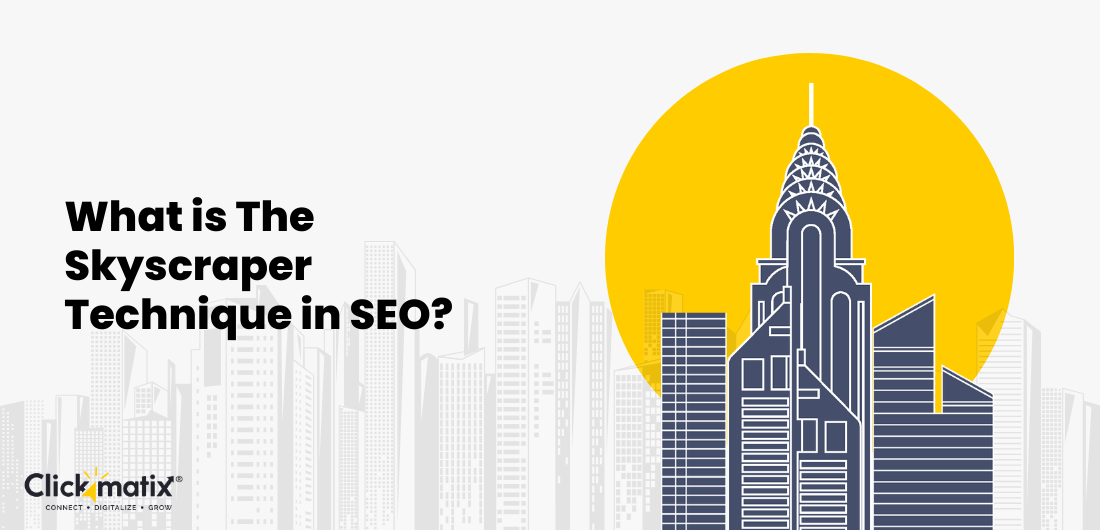
The Skyscraper Technique is a strategic approach to link-building that involves identifying high-performing content in a niche, creating a superior version of it, and then reaching out to relevant websites to earn backlinks. Initially popularised in 2013, this method aimed to improve organic traffic by developing content that surpasses existing resources in terms of quality, depth, and usability.
The technique operates on a simple analogy: just like the tallest skyscraper in a city gets the most attention, the best piece of content on a subject will naturally attract more backlinks and user engagement. While this strategy was highly effective in its early years, today’s competitive digital landscape demands more sophisticated implementation to yield significant results.
Is the Skyscraper Technique Still Effective in 2025?
Backlinks have long been the backbone of SEO success, helping websites climb search rankings and establish authority. Studies consistently show that quality backlinks boost rankings on search engine results pages (SERPs), but with AI-driven search models, evolving algorithms, and shifting user behaviors, traditional link-building tactics need to adapt.
For years, the Skyscraper Technique has been a go-to strategy for digital marketers. But does it still hold up in 2025? Or has it become another outdated SEO relic? This guide takes a deep dive into the Skyscraper SEO Technique—its origins, how it works, and whether it still delivers results. If you’re looking to maximise backlinks, boost rankings, and future-proof your SEO strategy, you’re in the right place. Let’s get started!
The Three-Step Process of the Skyscraper Technique
Step 1: Identifying Link-Worthy Content
The first step in successfully implementing the Skyscraper Technique is identifying existing content that has already attracted a significant number of backlinks. This helps ensure that your improved version has a strong foundation for success.
To find such content, leverage SEO tools like Ahrefs, SEMrush, and Moz, which analyse high-performing articles within your niche. The ideal content to target should meet the following criteria:
- Strong backlink profile – A high number of referring domains indicates that the content is valuable and widely referenced.
- High engagement levels – Articles with many social shares, comments, or interactions suggest they resonate with the audience.
- Evergreen relevance – Content that remains useful over time provides lasting value and continuous Skyscrapper link-building opportunities.
By pinpointing content that performs well, marketers gain insights into what earns backlinks, allowing them to create superior, more engaging versions that naturally attract links and rank higher in search results.
Step 2: Creating Superior Content
Once you’ve identified a high-performing article, the next step is to enhance it significantly. Simply rewording or repackaging existing ideas won’t be enough—your content must offer greater value and originality to stand out.
Here’s how to elevate your content:
- Increase depth and detail – Expand on overlooked aspects, provide clearer explanations, or break down complex concepts for better understanding.
- Integrate fresh research and data – Adding recent statistics, case studies, and expert insights improves credibility and relevance.
- Enhance multimedia appeal – Use infographics, videos, interactive tools, and high-quality images to boost engagement and shareability.
- Offer actionable insights – Provide step-by-step instructions, practical examples, or real-world applications to increase usefulness.
- Improve readability and design – Break up text with bullet points, subheadings, structured sections, and clean formatting to enhance user experience.
By making your content more insightful, visually appealing, and user-friendly, you increase the chances of attracting backlinks and outperforming the original version in search rankings.
Step 3: Outreach for Backlinks
The final step in the Skyscraper Technique is to contact websites linked to the original content and present your improved version as a better resource. This process requires a strategic and professional approach to maximise success.
Here’s how to conduct effective outreach:
- Personalise your message – Avoid generic mass emails. Address the recipient by name, mention their website, and explain why your content would benefit their audience.
- Be concise and compelling – Highlight what makes your version superior. Whether it includes updated research, better readability, or enhanced visuals, make your case succinctly.
- Maintain a professional and polite tone – Avoid aggressive or pushy language. A respectful approach fosters a positive response and long-term relationships.
- Offer value – Position your request as a win-win by emphasising how your content enhances their resource page or benefits their readers.
By crafting well-targeted outreach emails and building genuine connections, you increase the likelihood of securing backlinks and strengthening your content’s visibility.
Evaluating the Effectiveness of the Skyscraper Technique in 2025
While the Skyscraper Technique has historically delivered impressive results, its effectiveness in 2025 is no longer guaranteed. The growing prevalence of this strategy has led to several key challenges that make it harder to achieve the same level of success without additional refinements.
One major hurdle is content saturation—many industries are flooded with high-quality, well-optimised articles, making it difficult to create something truly unique. Additionally, increased competition has led to the widespread adoption of the Skyscraper Technique, reducing the success rate of outreach campaigns as website owners receive an influx of similar link requests.
Moreover, Google’s evolving algorithms now prioritise factors such as user engagement, search intent, and originality over link-building strategies alone. This means that while backlinks remain important, they are no longer the sole driver of rankings.
Despite these challenges, the Skyscraper Technique still holds value when adapted to modern SEO requirements. Instead of merely improving existing content, marketers must focus on creating original research, incorporating multiple formats such as video or interactive elements, and targeting underserved niche topics. Additionally, building long-term relationships with industry influencers can enhance outreach success.
By evolving beyond its original framework, the Skyscraper Technique can remain a viable tool in an SEO strategy. However, it should be combined with other link-building and content marketing strategies to maximise results. The key to success lies in offering true value rather than relying on outdated tactics.
Modern Adaptations of the Skyscraper Technique
To remain effective in 2025, the Skyscraper Technique must evolve beyond its traditional approach. One crucial adaptation is emphasising original research—publishing unique data, case studies, or survey results boosts credibility and attracts authoritative backlinks.
Additionally, diversifying content formats is essential. Creating videos, podcasts, infographics, and interactive tools enhances engagement, making Skycrapper content more shareable and appealing to different audiences. Search engines also favor multimedia-rich pages, improving visibility.
Another key strategy is focusing on niche topics rather than oversaturated, highly competitive keywords. Targeting underserved areas allows for easier ranking and increases the likelihood of earning backlinks from relevant sites.
Finally, shifting from cold outreach to relationship-building is vital. Instead of simply asking for links, forming long-term connections with industry influencers, bloggers, and content creators fosters natural backlink opportunities. Engaging with their content, offering mutual value, and participating in industry discussions strengthen these relationships over time.
By implementing these adaptations, marketers can ensure that the Skyscraper Technique remains a powerful SEO tool, driving sustainable organic growth in an increasingly competitive digital landscape.
Best Practices for Implementing the Skyscraper Technique Today
To remain effective in 2025, the Skyscraper Technique must evolve with these key adaptations:

Get weekly insights for revenue-shifting results
Sign up for our newsletter and be the first one to know about our exclusive offers, digital marketing news and updates.
|
|
Thank you for Signing Up |


- Emphasise Original Research: publish unique data, case studies, and surveys to boost credibility and attract authoritative backlinks.
- Diversify Content Formats: Incorporate videos, podcasts, infographics, and interactive elements to enhance engagement and shareability.
- Target Niche Topics: Focus on underserved areas instead of competing in highly saturated keyword spaces to achieve easier rankings and backlink opportunities.
- Prioritise Relationship-Building: Shift from cold outreach to forming genuine connections with industry influencers, bloggers, and content creators.
- Engage in Mutual Value Exchanges: Offer insights, collaborate on content, and actively participate in industry discussions to strengthen relationships and earn natural backlinks.
By implementing these strategies, marketers can ensure that the Skyscraper Technique remains an effective SEO tool, driving sustainable organic growth in a competitive digital environment.
Potential Risks and Ethical Considerations
While the Skyscraper Technique is effective, improper execution can lead to ethical concerns and diminishing results. One major issue is content saturation—if too many competitors use the same strategy, it becomes harder to stand out. Additionally, aggressive outreach can backfire; excessive or impersonal link requests may annoy industry professionals and harm potential collaborations.
Another risk involves plagiarism concerns—simply rewording existing content without adding unique value can damage credibility and violate ethical standards. There’s also the danger of over-relying on backlinks rather than focusing on genuine audience engagement, which can weaken long-term content effectiveness. Finally, manipulative practices, such as misleading claims or artificial link-building tactics, can lead to search engine penalties and reputational damage.
To mitigate these risks, marketers should prioritise originality, meaningful relationships, and high-quality content creation, ensuring the Skyscraper Technique remains a sustainable and ethical SEO strategy.
Alternatives to the Skyscraper Technique
While the Skyscraper Technique is effective, diversifying link-building strategies can enhance SEO efforts and drive sustainable growth. One popular alternative is guest blogging, where marketers contribute high-quality articles to reputable sites in exchange for backlinks. This not only boosts SEO but also builds authority and industry credibility.
Another effective method is broken link building. This involves identifying broken or outdated links on authoritative websites and offering relevant, high-value content as a replacement. Website owners benefit from improved user experience while marketers secure high-quality backlinks.
Additionally, content repurposing helps maximise reach by transforming existing content into different formats. Blog posts can be converted into infographics, videos, podcasts, or slide presentations, making them more engaging and shareable across various platforms. This approach increases visibility and attracts new audiences while naturally earning backlinks.
By integrating these strategies, marketers can create a well-rounded SEO approach that complements or even surpasses the Skyscraper Technique in effectiveness.
Conclusion
The Skyscraper Technique remains a viable SEO strategy in 2025, but its effectiveness depends on execution quality. Simply recreating existing content is no longer enough. Instead, the focus must shift toward innovation, unique insights, and improved user experience.
By integrating modern adaptations and alternative link-building strategies, digital marketers can maximise their chances of success. When done right, this technique continues to drive traffic, increase authority, and enhance search rankings in an increasingly competitive digital landscape.
In search for strategic sessions?
Let us understand your business thoroughly and help you
strategies your digital product.
It's time to call your business-
a brand!
Australian Owned Agency
Save Time and Money
Unbeatable Value
Where Work Gets Done

free Ecommerce SEO guide for Higher Sales & Conversion



THE ULTIMATE MARKETING GUIDE FOR LAWYERS



Youtube Ads Guide How to Advertise on Youtube



free Ecommerce SEO guide for Higher Sales & Conversion


It's time to call your business-
a brand!
Australian Owned Agency
Save Time and Money
Unbeatable Value
Where Work Gets Done



The Game-Changing Ecommerce SEO Guide That Will Blow Your Mind & Sales
With this Ecommerce SEO Guide, you'll be able to:
- Develop a Ecommerce SEO strategy.
- Build a content marketing strategy that aligns with your business goals.
- Convert your website visitors into paying customers.



Youtube ads guide how to advertise on youtube
With this Youtube ads Guide, you'll be able to:
- Develop a Youtube ads strategy.
- Build a type of ads of your own that aligns with your business goals.
- Generate revenue from youtube ads.
It's time to call your business-
a brand!
Australian Owned Agency
Save Time and Money
Unbeatable Value
Where Work Gets Done










 Australian Owned Agency
Australian Owned Agency Save Time and Money
Save Time and Money Unbeatable Value
Unbeatable Value Where Work Gets Done
Where Work Gets Done